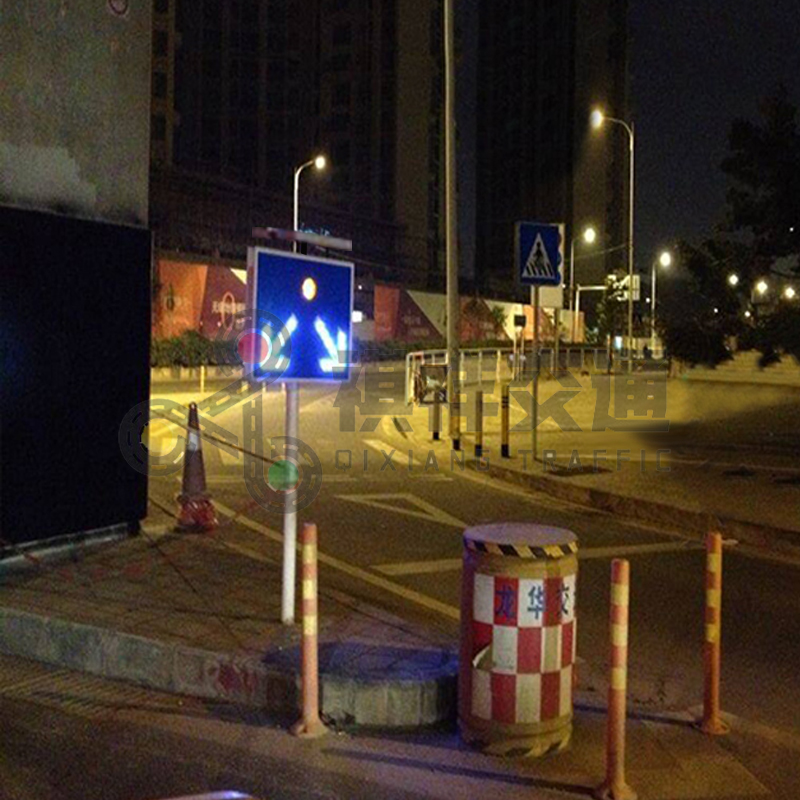In recent years, solar traffic signs have become increasingly popular due to their environmental benefits and cost-effectiveness. The signs are powered by solar panels that convert sunlight into electricity, making them a sustainable and efficient alternative to traditional grid-powered signs. However, while solar traffic signs offer many advanta ges, there are some precautions that need to be considered to ensure their safe and effective use.
ges, there are some precautions that need to be considered to ensure their safe and effective use.
1. Correct placement and orientation
One of the most important precautions when using solar traffic signs is to ensure they are placed in a sunny area. Solar panels require direct sunlight to generate electricity, so it is crucial to install your sign in a location that receives adequate sunlight throughout the day. Additionally, the orientation of solar panels should be optimized to capture the maximum amount of sunlight, typically facing south in the Northern Hemisphere and north in the Southern Hemisphere.
2. Regular maintenance and cleaning
To ensure optimal performance of solar traffic signs, regular maintenance and cleaning is essential. Dust, dirt and debris can accumulate on solar panels, reducing their efficiency and blocking the conversion of sunlight into electricity. Therefore, it is important to clean your solar panels regularly to remove any obstructions and maintain their effectiveness. In addition, the signage should be checked for damage or malfunction, and the battery should be checked and replaced as needed to prevent insufficient power.
3. Battery storage and management
Solar traffic signs are equipped with rechargeable batteries that store the electricity generated by the solar panels for use when sunlight is insufficient or at night. Proper battery storage and management is critical to reliable operation of your sign. It is important to use high-quality, long-lasting batteries and ensure they are properly connected and maintained. Batteries can degrade and lose their capacity over time, so batteries need to be monitored and replaced regularly to avoid power outages.
4. Weather resistance
Solar traffic signs are exposed to a variety of weather conditions, including rain, snow and extreme temperatures. Therefore, it is crucial to choose a sign that can withstand these environmental factors. The materials used in sign construction should be durable and weather-resistant, and electrical components should be sealed and protected from moisture to prevent damage and ensure the longevity of the sign.
5. Adequate lighting and visibility
Proper lighting and visibility are critical to the effectiveness of traffic signs in conveying important information to drivers and pedestrians. Solar signs should be equipped with high-quality LED lights that are bright and easy to see, especially at night or in low-light conditions. It is important to regularly check the brightness and functionality of the lights to ensure that signs remain clearly visible and legible at all times.
6. Comply with regulations and standards
When installing solar traffic signs, local regulations and standards must be followed to ensure they operate legally and safely. This includes obtaining the necessary permits and approvals to install the sign, as well as adhering to specific guidelines regarding its design, placement and function. By complying with these regulations, the risk of potential problems or conflicts associated with the use of solar traffic signs can be minimized.
In summary, solar traffic signs offer a sustainable and cost-effective solution for communicating important messages on the road. However, to ensure their safe and effective use, it is important to consider a number of precautions, including correct placement and orientation, regular maintenance and cleaning, battery storage and management, weather resistance, adequate lighting and visibility, and compliance with regulations and standards. By considering these precautions, the reliability and performance of solar traffic signs can be maximized, helping to achieve a safer and more efficient traffic management system.
Post time: Aug-29-2024






